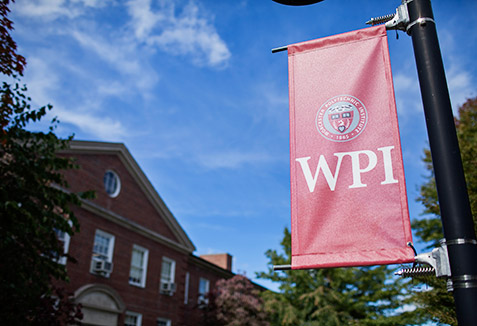Call it a friendly college rivalry – among robots.
Two robotics squads – a team organized by Worcester Polytechnic Institute (WPI) and a separate WPI group participating as part of a 10-team college consortium – will square off in a pitched battle next week in the Defense Advanced Research Projects Agency (DARPA) Robotics Challenge (DRC) Trials. The event will take place Dec. 20 and 21 at the Homestead-Miami Speedway in Homestead, Fla.
The competition pits 17 robotics teams from around the world against each other with an eye toward paving the way for humanoid robots that can help respond to man-made and natural disasters. DARPA officials say the DRC was created after the nuclear disaster in Fukushima, Japan, in March 2011, which created an environment that was too hazardous for people to enter.
The teams have been busy programming and training robots for this event. In one corner is Team WRECS, which stands for WPI’s Robotics Engineering C Squad. The team, featuring 23 WPI members, has been programming an Atlas humanoid robot that stands 6’2” and weighs 330 pounds. The team, which christened its robot WARNER (WPI's Atlas Robot for Nonconventional Emergency Response), is also being assisted by nine members from Carnegie Mellon University’s Robotics Institute.
In the other corner is DRC-HUBO, a 5-foot humanoid robot that is being prepared for the competition by a team led by Drexel University; the team includes three WPI robotics professors and several WPI students, as well as students and faculty from nine other colleges.
The robots must perform a number of autonomous and semi-autonomous tasks mandated by DARPA. They will be required to drive a utility vehicle, travel dismounted across rubble, remove debris blocking an entryway, open a door and enter a building, and climb an industrial ladder and traverse an industrial walkway. The robots must then use a tool to break through a concrete panel, locate and close a valve near a leaking pipe, and replace a component such as a cooling pump. Teams will be awarded a maximum of four points for each task for a total potential of 32 points.
Matt DeDonato, a 2009 WPI graduate and leader of Team WRECS, said the group has been busy putting WARNER through its paces. The team acquired the $2 million humanoid robot from Boston Dynamics in July after being one of the top finishers in the preliminary DARPA Virtual Robotics Challenge.
"In the short time that we have had WARNER, the team has taken a robot that could barely walk and transformed it into a machine that can drive a car, climb a ladder, use power tools, and perform many more human-like tasks," said DeDonato.
Meanwhile, Dmitry Berenson, assistant professor of computer science and robotics engineering at WPI, is leading WPI's research group for the DRC-HUBO team. Berenson noted that WPI's role on the team is to enable the robot to close the valve.
"We had our basic approach hammered out over the summer, and since then it's been a lot of testing and debugging," said Berenson. "We ran remote tests over the Internet to connect to Drexel in order to simulate being in the trailer on competition day."
Berenson said the biggest challenge he has faced "…is dealing with the open-endedness of our task. Until very recently we didn't know where the valve would be or how big it would be, so our approach was built on autonomous planning, which could deal with most reasonable valve locations automatically. The user tells the autonomous planner which valve to turn and by how much."
Both teams have garnered support from a number of professors. Co-principal investigators for Team WRECS are Michael Gennert, professor of computer science and director of WPI's Robotics Engineering program; Taşkin Padir, assistant professor of robotics engineering; along with CMU professor Christopher Atkeson.
Meanwhile, Sonia Chernova, assistant professor of computer science and robotics engineering at WPI; and Rob Lindeman, associate professor of computer science, have supported Berenson.
As many as eight qualifying teams will receive up to $1 million each from DARPA and have a year to prepare for the DARPA Robotics Challenge Finals in December 2014.
• To track WARNER's journey to Florida and the competition itself, follow @WPI_WARNER on Twitter.
• To watch the DRC Trials in limited live streaming, visit DRC Trials.
